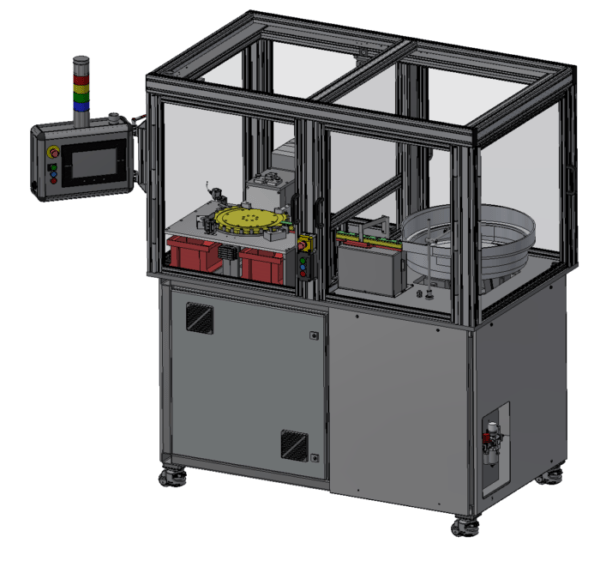
Case Study: Laser Marking and Inspection for Medical Device Assembly
In a recent case study, SP Automation and Robotics was called upon to design and manufacture a laser marking and inspection system for a component that was part of an overall assembly medical device assembly.
The traceability of products is essential for most manufacturers. Being able to record batch and product data and manufactured dates allows companies to track their products from the manufacturing process and ultimately to when the product goes into the field. SP Automation and Robotics was asked to design and manufacture a laser marking and inspection system for a component that was part of an overall assembly medical device assembly.
The Challenge
The challenge was to design, develop and build a complete marking module. The system had to accept multiple families of parts and therefore change tooling was required.
- A self-contained system that can be easily moved and transported
- Automatic feeding of components and the ability to top-up bowl levels whilst the machine is running
- Simple tool design to allow for quick changeovers
- Laser marking of components
- 100% inspection of numerical and barcode
- Segregation of good and bad parts into separate collection bins
- Cater for various device configurations therefore including product
The Solution
Based around a servo-driven tooled star wheel the metal components were from a bowl feeder and on to a linear feed track. At the end of the track, the components were fed into scallops machined into the star wheel.
Although the output of the machine was 100 parts/minute, the design and rotational speed of the scalloped star wheel meant that no outside retaining rings were required to hold the product in place.
On entering the dial plate, the part was sensed and an encoder flag set to track its position. The product was then moved past a Keyence laser maker system which coded the product with a unique number and barcode. Immediately after the laser marking, a camera inspected the quality as well the accuracy of the codes printed.
Parts that passed all tests were cammed out of the dial plate and into a collection bin. Failed parts were then unloaded into a reject bin.
Features & Benefits
- Self-contained production module
- Ability to for quick change over of tooling
- Throughput of up to 100 parts/minute
- 100% Inspection of all components
- Permanent marking of components
- Automatic segregation of passed and failed parts
- Recording of all process data, including codes
Visit the company website for more case studies like this one, illustrating the wide array of industries and applications that benefit from automation.
For more information about this application or to discuss your bespoke solution, get in touch with SP Automation and Robotics using the details below.
SP Automation & Robotics
01382 880088
Website
Email





